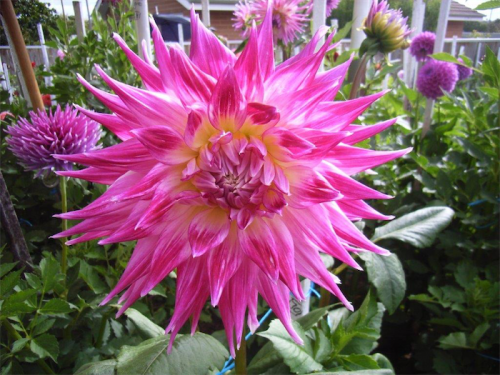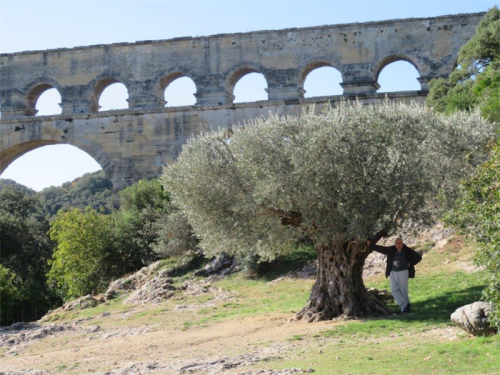
IT’S that time again to dig up dahlias, lifting them when the foliage blackens after frost, but if this hasn’t occurred by the end of this month, lift them anyway.

Stems should be cut to about 15cm above ground level. Loosen the soil with a spade (a fork can damage the tuber) taking care not to cut or bruise them as they are lifted. Remove excess soil and trim any fine roots.
If they are named varieties, it’s a good idea to write on the dry tuber the name with a waterproof pen.
Store upside down for about three weeks in a frost-free area allowing the stems to dry. Place in trays and cover with dry, washed river sand, not builders’ sand, leaving the stems exposed in a frost-free shed. Check periodically for any showing signs of rot.

LAST year, while holidaying in Provence, in the south of France, we visited the 2000-year-old Pont du Gard aqueduct at Arles, built by the Romans in the 1st century AD to carry water to Nimes.
Fifty metres high and 360 metres long with its three levels of arches, it is the most famous Roman monument in France.
My interest in visiting was also to see the site’s many olive trees, which have been verified by carbon dating as being at least 3000 years old.
Imagine Roman aqueduct construction workers picking olives from trees that were already 1000 years old! In Australia we think of old eucalypts as several hundred years old.
Today carbon dating is vitally important in accessing climate change. We can now see how the climate has changed over the last couple of hundred years and even how atomic testing in Australia and the Pacific shows in trees.
READING a review of a new book, “Wild Storms”, made me wonder if anything positive came from storms.
I was reminded of the great storm in Britain in 1987 when more than 15 million mature trees were felled in the half hour the storm passed through any given area.
And yet, amid this devastation, there was an incredible amount of valuable information on trees, many of them hundreds of years old.
Counting the growth rings of trees is still a remarkably accurate way of assessing the age of the tree and, in many cases, the spacing of the tree rings tallied with the records of old monasteries, where monks kept amazingly accurate records of dry and wet years, years of prolonged drought and failed harvests.
Jottings…
- Plant winter-flowering Clematis nepaulensis or the lemon-scented Clematis cirrhosa “Wisley Cream”.
- Kangaroos eating your lawn? Readers Robyn and Derek have found sprinkling blood and bone on the grass to be a good deterrent.
- When planting trees dig a square hole, which will allow roots to spread into the surrounding soil more easily.
- Possibly the last mow of the lawn for the season, but not too short.
- Plant calendulas around the edge of the veggie patch.
Who can be trusted?
In a world of spin and confusion, there’s never been a more important time to support independent journalism in Canberra.
If you trust our work online and want to enforce the power of independent voices, I invite you to make a small contribution.
Every dollar of support is invested back into our journalism to help keep citynews.com.au strong and free.
Thank you,
Ian Meikle, editor




Leave a Reply